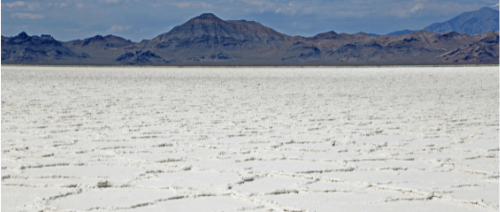Exploring the Enigmatic Beauty of Utah's Great Salt Desert
DESTINATIONS
4/27/20242 min read


Utah, a land of diverse landscapes and natural wonders, boasts an array of breathtaking sights that never fail to captivate the imagination. Among its many treasures lies a vast expanse of surreal beauty—the Great Salt Desert. Stretching across the western reaches of Utah, this otherworldly landscape of salt flats and barren plains offers a glimpse into a world where time seems to stand still.
The Mysteries of the Great Salt Desert
Nestled amidst the rugged terrain of the western United States, the Great Salt Desert, also known as the Bonneville Salt Flats, is a testament to the power of nature to create landscapes of unparalleled beauty. Spanning over 30,000 acres, this vast salt pan is the remnants of an ancient lake that once covered much of western Utah. Today, it stands as a stark and hauntingly beautiful testament to the forces of erosion and geology.
The Salt of the Earth
At first glance, the Great Salt Desert appears desolate and barren, its shimmering white expanse stretching as far as the eye can see. Yet, upon closer inspection, this seemingly lifeless landscape teems with activity and intrigue. The crust of salt that covers the desert floor is not only a testament to the region's unique geology but also a vital habitat for a variety of specialized plant and animal species adapted to its harsh conditions.
One of the most iconic features of the Great Salt Desert is its flat, featureless terrain, which makes it an ideal location for speed trials and land speed record attempts. Each year, adrenaline junkies and racing enthusiasts from around the world flock to the salt flats to push the limits of human speed and engineering. The vast expanse of the desert provides the perfect stage for these high-speed pursuits, where the only limit is the horizon itself.
Beyond its reputation as a mecca for speed demons, the Great Salt Desert also serves as a blank canvas for artists and photographers seeking inspiration in its stark beauty. The ethereal quality of the salt flats, with their otherworldly appearance and ever-changing hues, has drawn creatives from all walks of life to capture its essence through paint, film, and photography. From abstract installations to avant-garde fashion shoots, the desert's minimalist aesthetic provides a stunning backdrop for artistic expression.
But perhaps the most fascinating aspect of the Great Salt Desert is its connection to the distant past. The salt flats are named after the ancient Lake Bonneville, a vast inland sea that once covered much of present-day Utah. As the lake dried up thousands of years ago, it left behind a layer of salt and minerals that formed the expansive salt pan we see today. The remnants of this prehistoric lake serve as a reminder of the ever-changing nature of the Earth's landscape and the forces that shape it over time.
Despite its remote location and harsh environment, the Great Salt Desert is not immune to the impacts of human activity. Pollution, habitat destruction, and climate change threaten to disrupt the delicate balance of this fragile ecosystem. Conservation efforts are underway to protect the desert and its inhabitants, ensuring that future generations can continue to marvel at its beauty and wonder.
Embracing the Unpredictable Beauty of Nature
In a world of constant change and upheaval, the Great Salt Desert stands as a timeless testament to the power and beauty of the natural world. From its shimmering salt flats to its vast expanse of open sky, this enigmatic landscape invites us to pause, reflect, and marvel at the wonders of the Earth. As we explore its mysteries and contemplate its ancient origins, let us remember to cherish and protect this precious resource, preserving it for generations to come.

